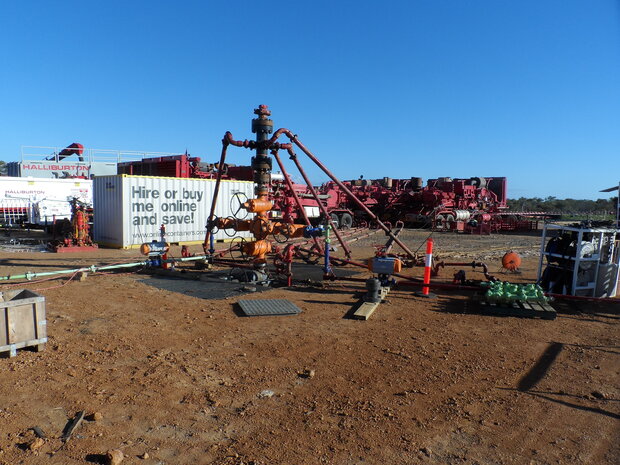More than 600 petroleum wells in the State have undergone stimulation activities of various types since 1958, with no observed or reportable adverse consequences.

In many rock formations, biological, chemical and/or physical processes alter the reservoir rock over geologic time, in some cases partially or completely filling the openings, or pores, in the rock and therefore reducing the ability of oil and gas to flow. Ultimately, these diagenetic processes can determine the commercial viability of a petroleum reservoir, because they control the volume and rate at which petroleum will flow up a wellbore. In circumstances where pore space is very restricted, some form of reservoir stimulation, defined as a treatment performed to restore or enhance the productivity of a well, may be beneficial in allowing hydrocarbons to flow.
Hydraulic fracturing, also known as hydraulic fracture stimulation, is the fracturing, or breaking, of a reservoir rock with a liquid under high pressure. The treatment creates artificial openings and cracks in the rock that help to increase its permeability, or ability to flow, and allow more petroleum to enter the wellbore. The process involves pumping fluid down a wellbore at a pressure that is greater than the rock strength of the formation. When the rock breaks or fractures, the injected fluid flows through it, continuing the fracture propagation. It is possible that multiple fractures will be created and developed in a tree-like pattern, with increasing numbers of branches away from the injection point.
Fluid is injected first, until the fracture is wide enough to accept a solid, or propping agent, known as proppant. The purpose of the proppant is to keep the fracture open once the injection operation ceases. Either sand or man-made ceramic beads are used to hold or “prop” open the fractures.
In general, hydraulic fracture treatments are used to increase the rate at which oil or gas can be produced from a well. Since the first treatment in the US in 1947, hydraulic fracturing has become a common treatment for stimulating the productivity of oil and gas wells.
It is common for a Diagnostic Fracture Injection Test or DFIT to be conducted prior to a hydraulic fracture stimulation to aid in the design of the stimulation and even to determine if a stimulation is viable.
Matrix acidising refers to one of two types of low volume stimulation processes in which acid is injected into the well at pressures below formation fracture pressure, either to stimulate a well to improve flow or to remove damage. During matrix acidising, these acids dissolve part of the near-wellbore reservoir formation, as well as the solids within the pores that are inhibiting the permeability of the rock. A matrix treatment can also restore permeability by removing damage around the wellbore caused by drilling or completing a well or by workover fluids and solids precipitating from produced water or oil (i.e., scale or paraffin). Matrix acidising can also improve productivity in both sandstone and carbonate reservoirs by enlarging natural pores, which stimulates the flow of hydrocarbons. The permeability increase is much larger in carbonate rock than in sandstone, because carbonates are made of sediments that completely dissolve in hydrochloric acid.
The second type of low volume stimulation is acid fracturing, where acid is pumped down a wellbore under pressures greater than formation fracture pressure to “etch” channels in the rock walls of naturally occurring fractures, and then flowed back up the wellbore. Rock must be at least partially soluble in acid for channels to be etched, and acid fracturing is thus confined to carbonate reservoirs and never used to stimulate sandstones or shales. Acid fracturing is localised, with long etched fractures difficult to achieve because of rapid acid reaction with the formation. The most commonly used fluid in acid fracturing is 15% hydrochloric acid (HCl).
Carbon dioxide (CO2) may be used as an additive in acid fracturing because it is highly soluble in both oil and water. When carbon dioxide dissolves in water, it forms carbonic acid (H2CO3), which dissolves the matrix in carbonate rocks and causes a great reduction in viscosity, or resistance to flow.
The well list summarises wells drilled in Western Australia that have been subjected to some form of stimulation (data from petroleum well records held by the Department of Mines, Industry Regulation and Safety (DMIRS)). Several different types of stimulation activity have occurred in WA, including hydraulic fracturing, acid fracturing and matrix acidising.
Relevant information
Find more information on recent activities involving high pressure, high volume hydraulic fracture stimulation.
WA Well Stimulation - Well List (PDF 88kb)
